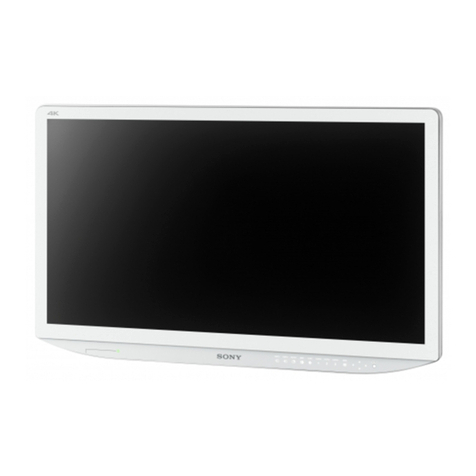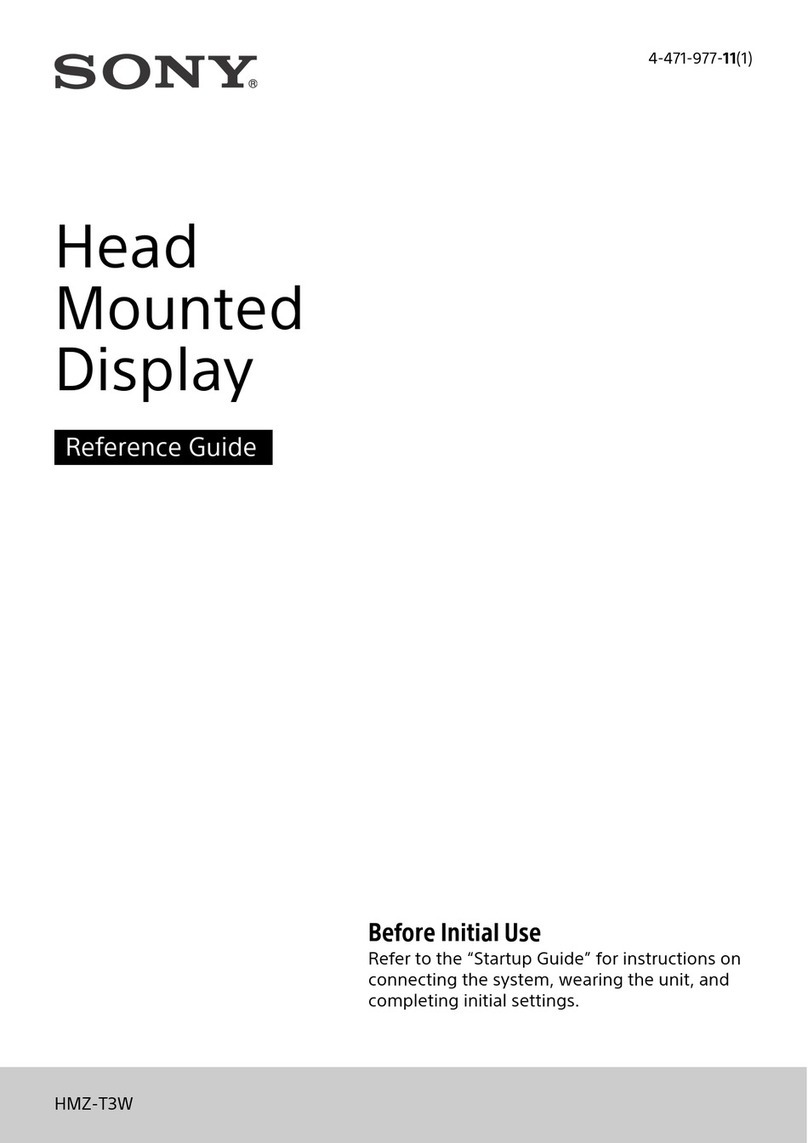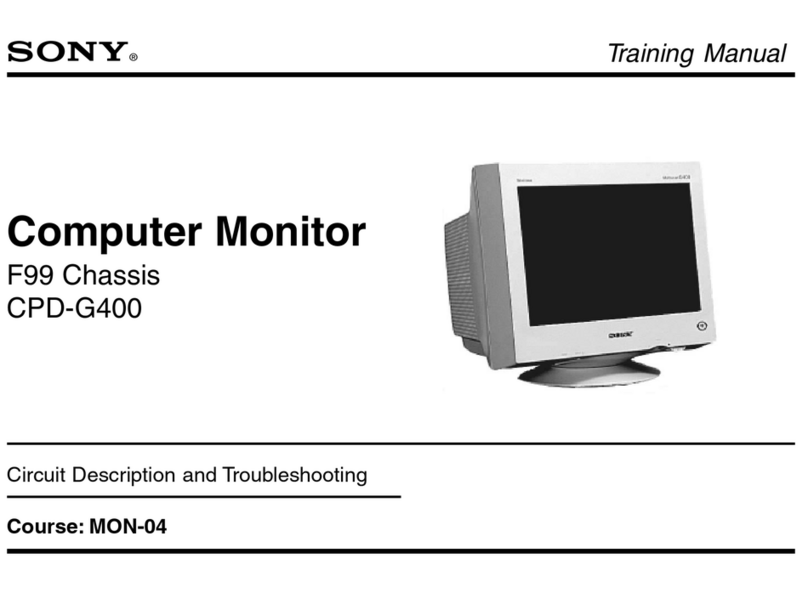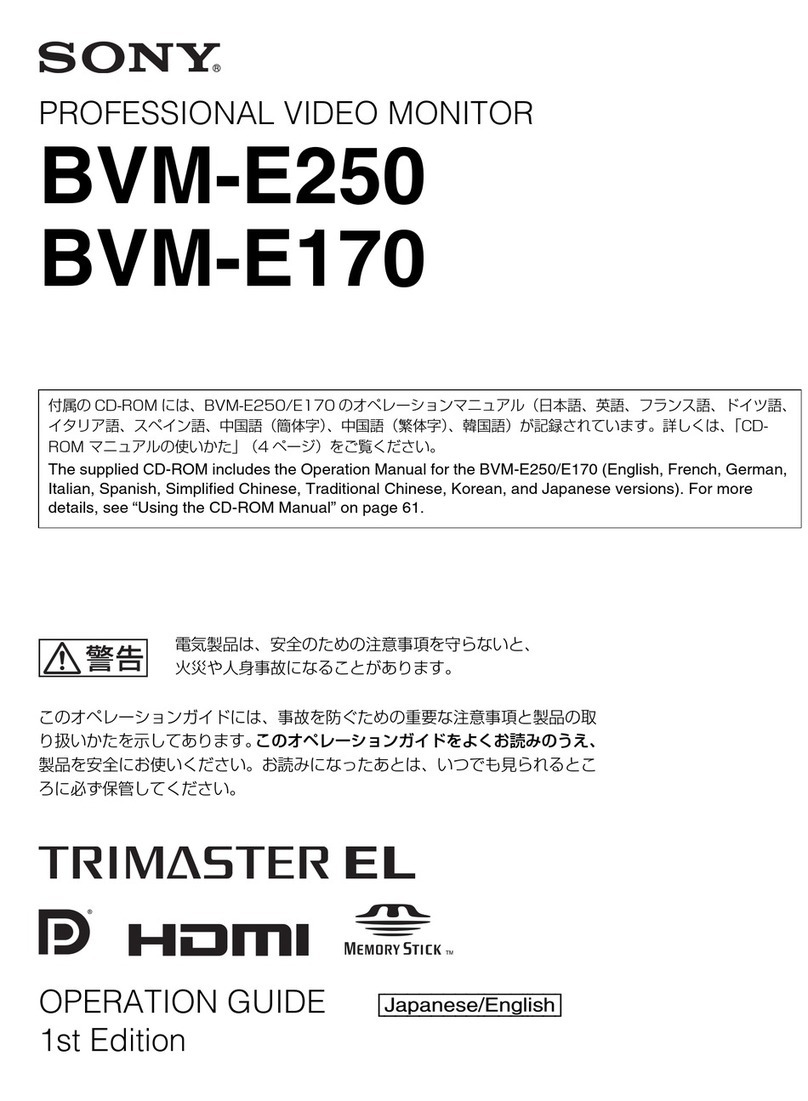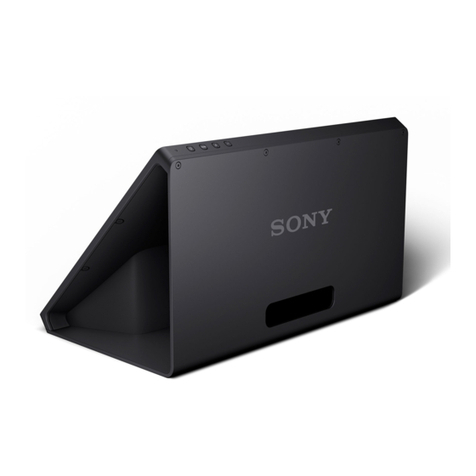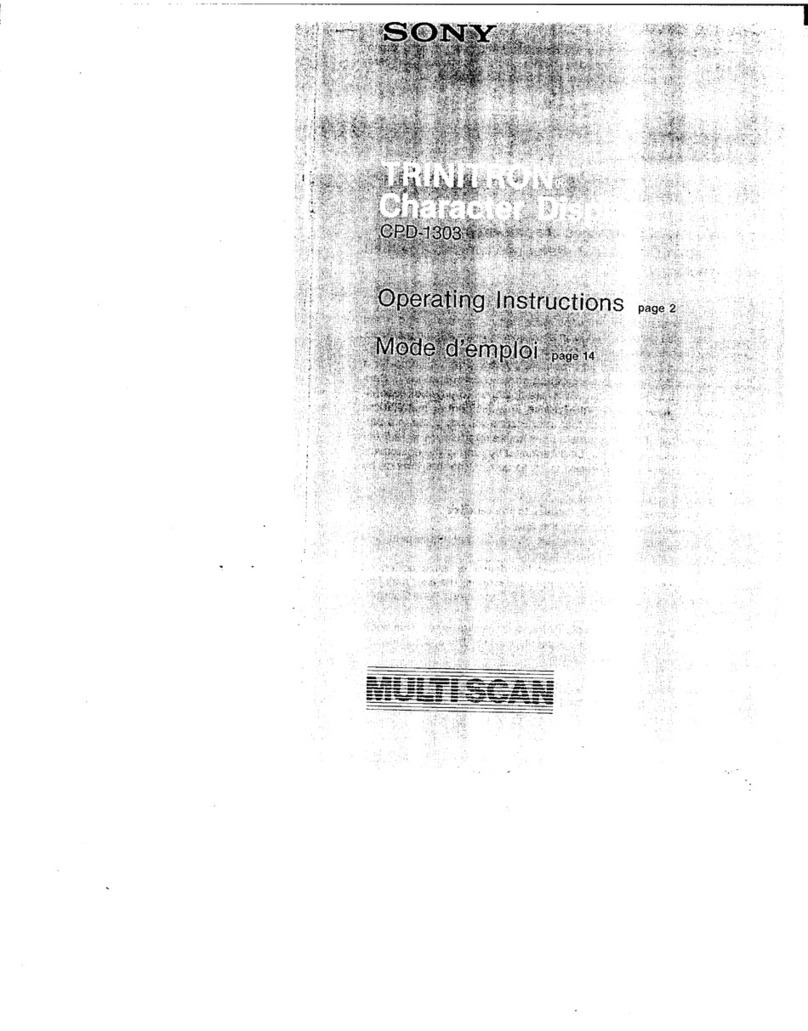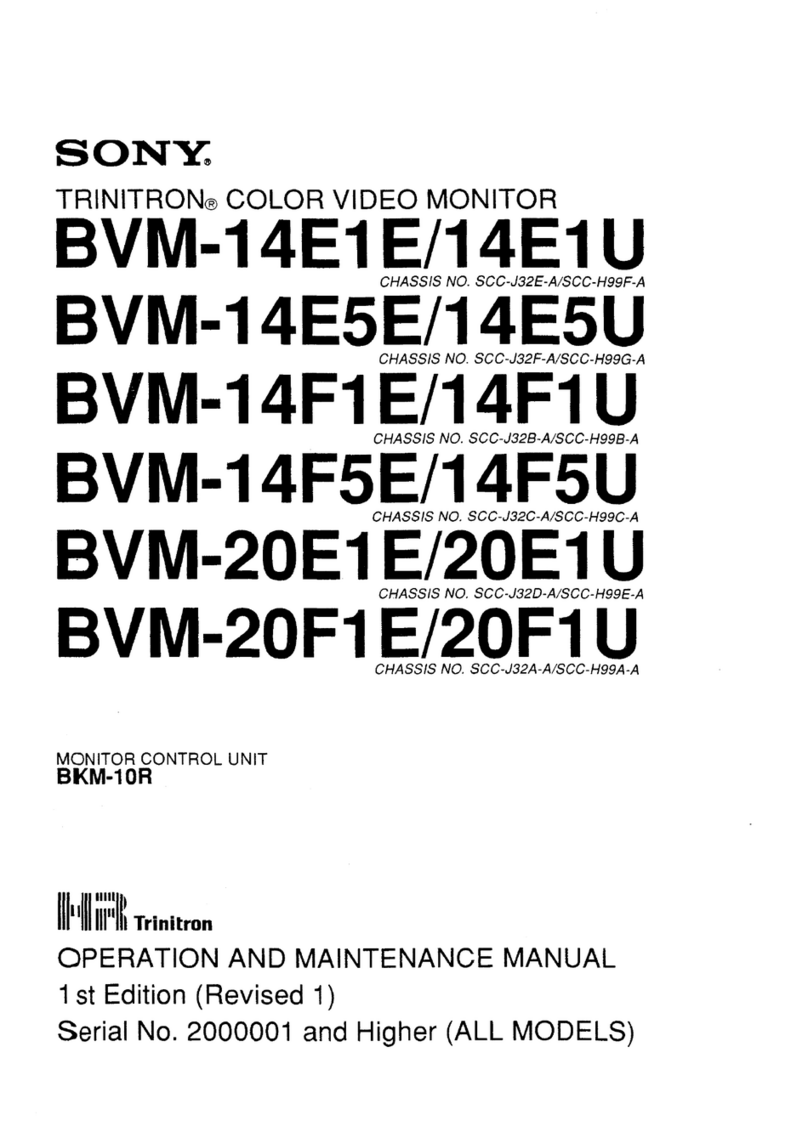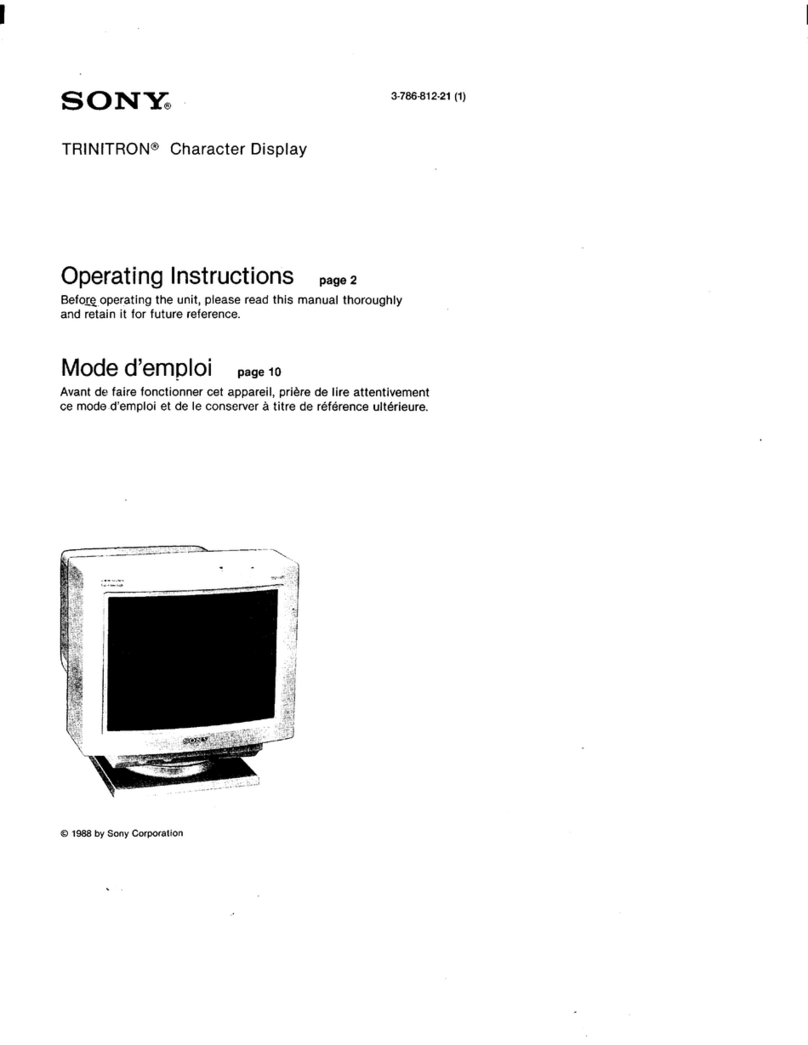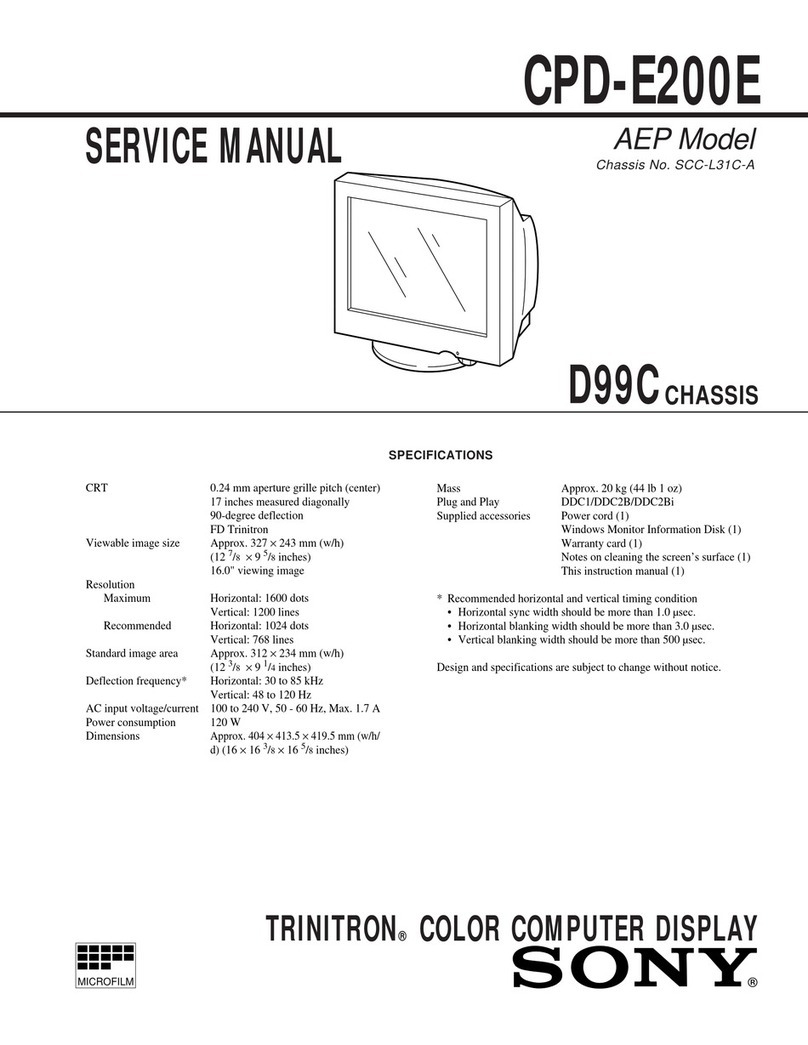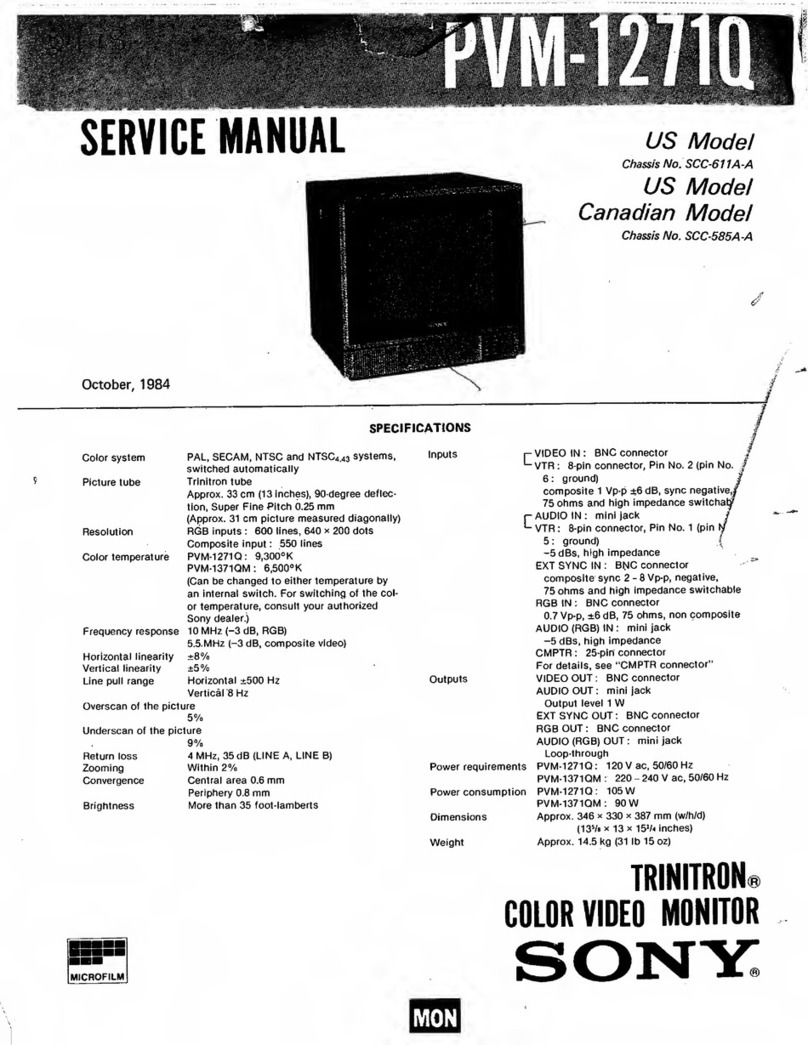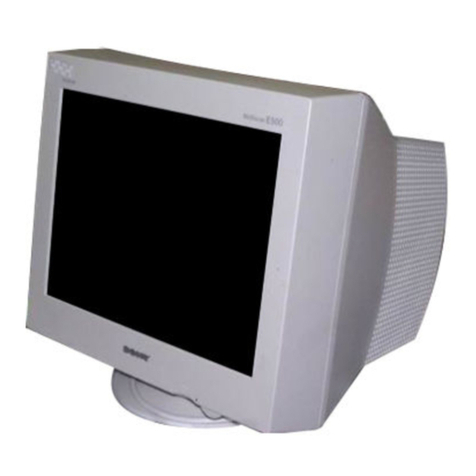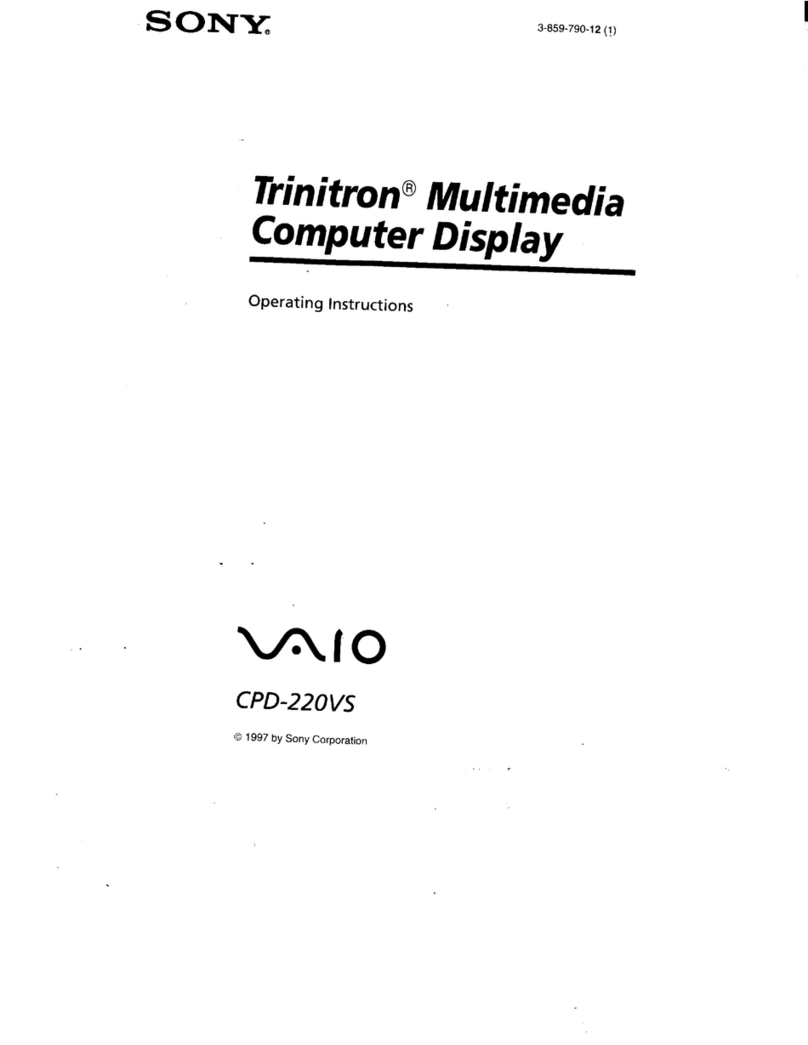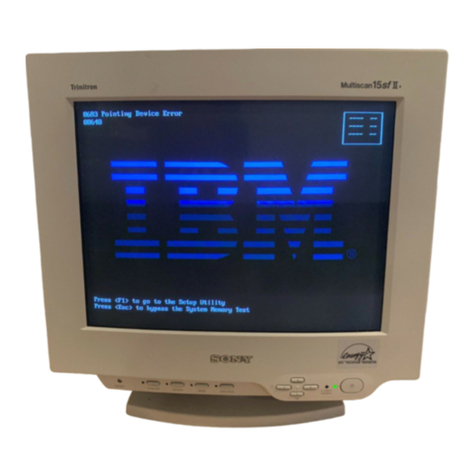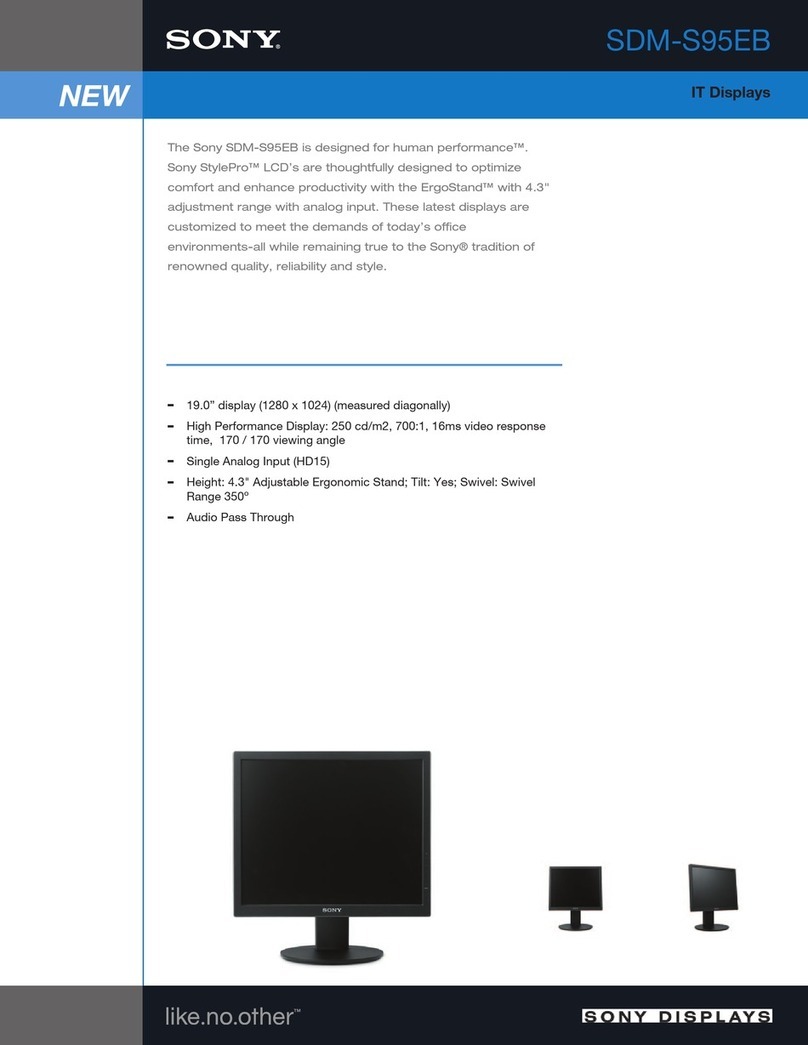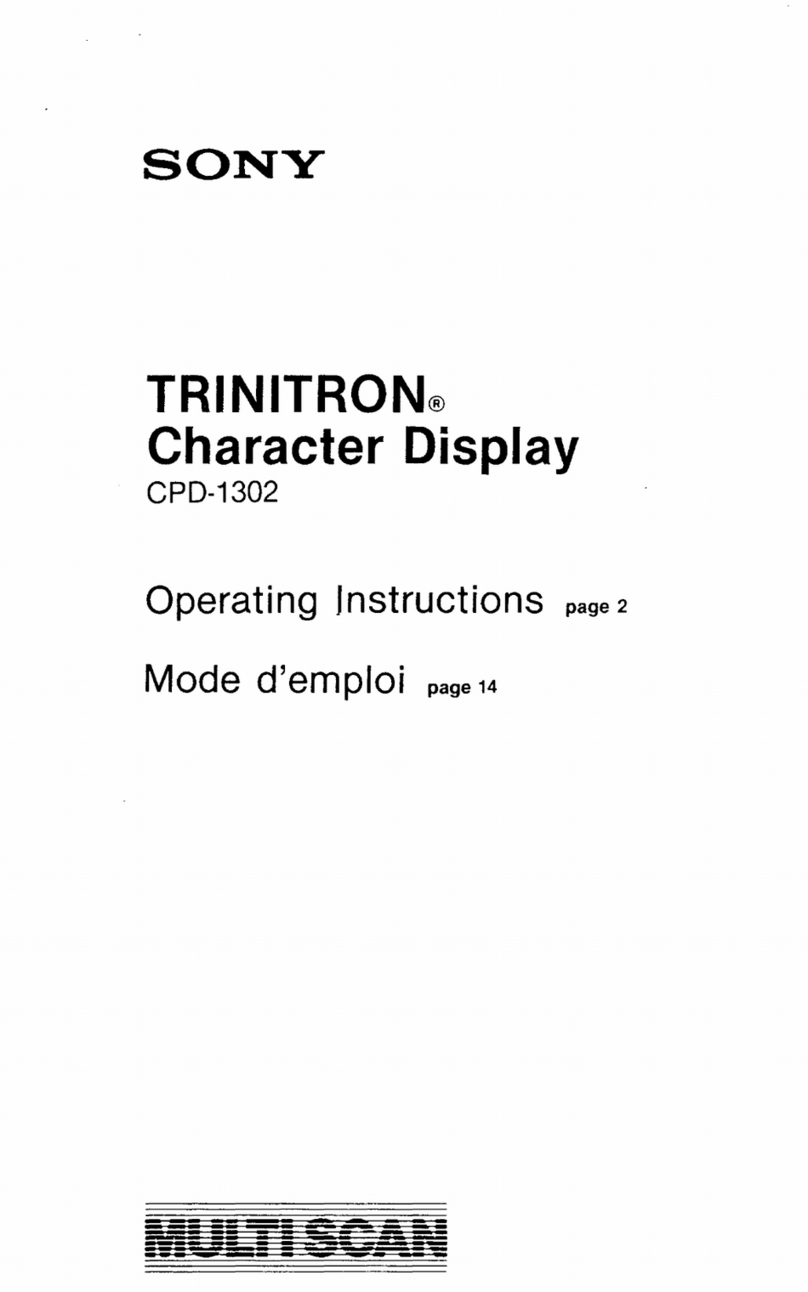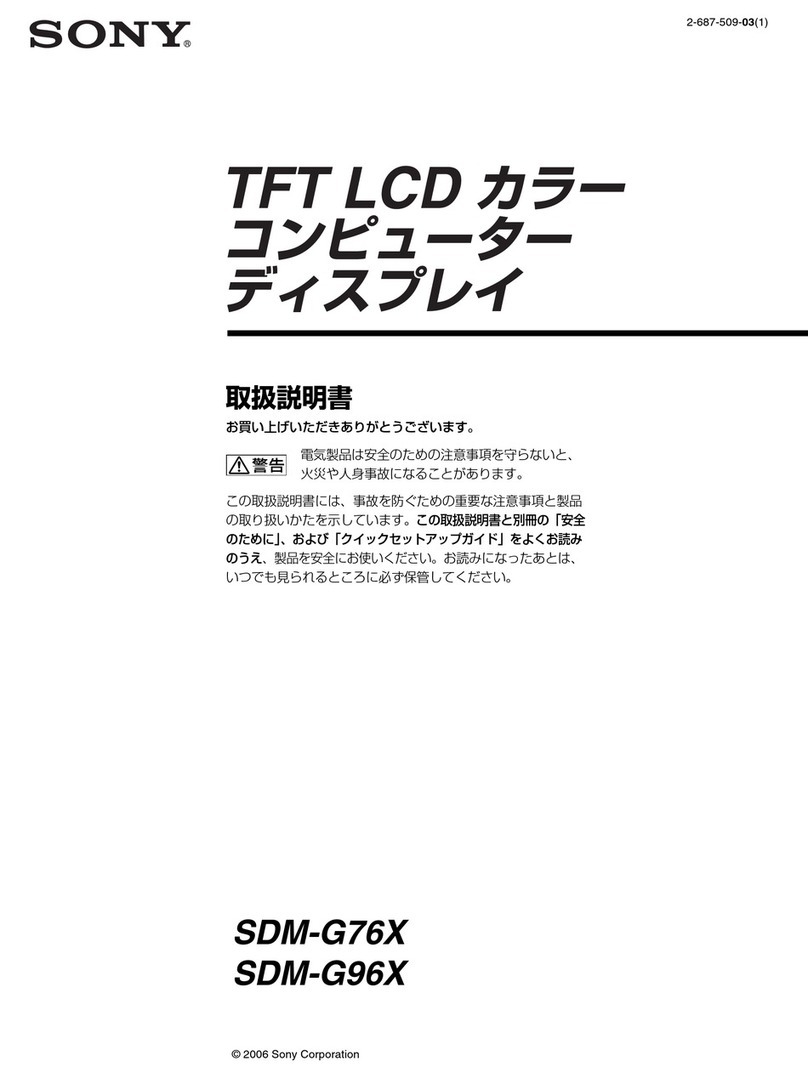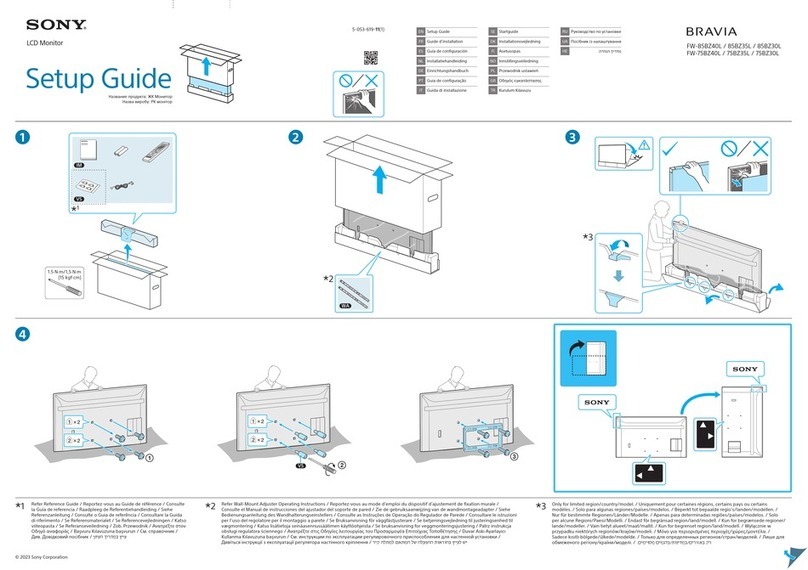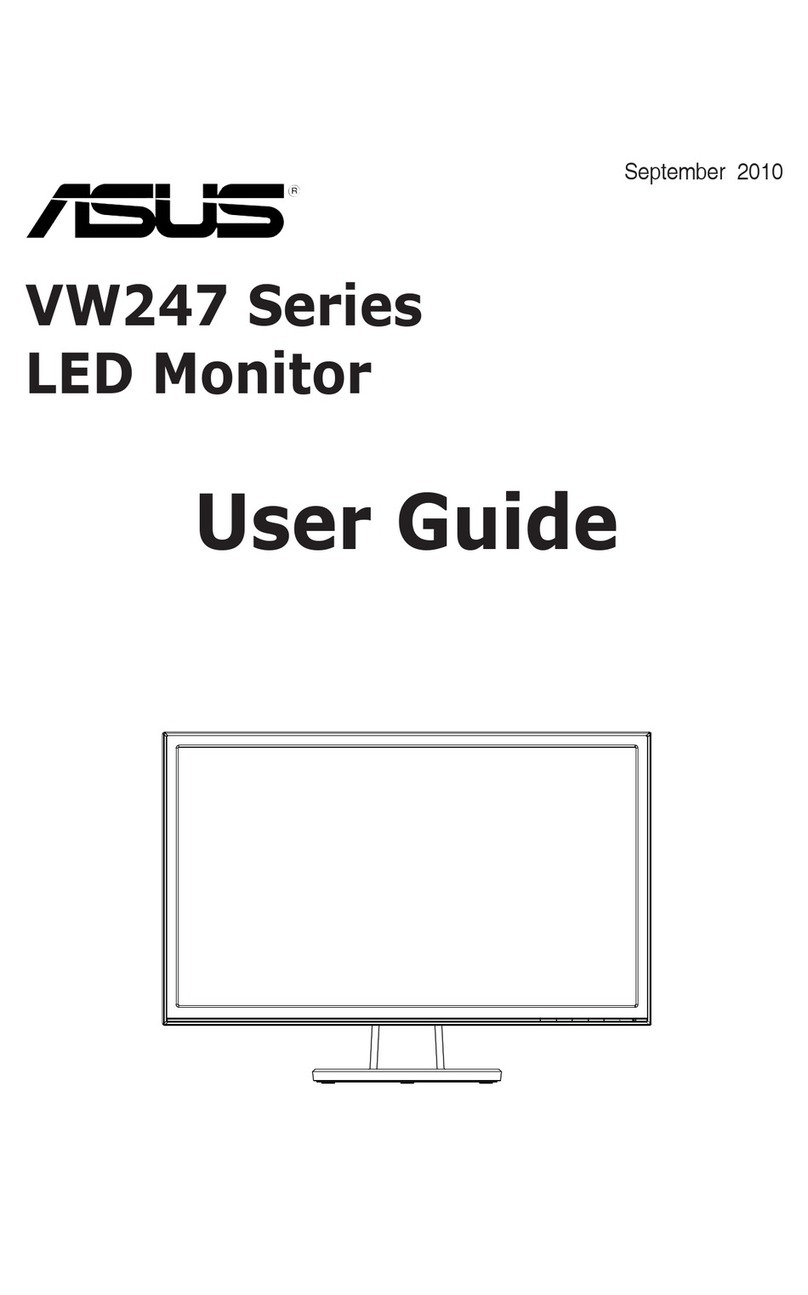
Precaution 7
On Burn-in
Due to the characteristics of the material used in the
OLED panel, permanent burn-in or reduction in
brightness may occur.
These problems are not a malfunction.
Images that may cause burn-in
Still images in the HDR display
Masked images with aspect ratios other than 16:9
Color bars or images that remain static for a long time
Character or message displays that indicate settings or
the operating state
On-screen displays such as center markers or area
markers
Images with a frame (including Multi-View displays)
For details on the HDR (High Dynamic Range) display, see
page 43.
To reduce the risk of burn-in
Turn off the character and marker displays
Press the MENU button to turn off the character
displays. To turn off the character or marker displays
of the connected equipment, operate the connected
equipment accordingly. For details, refer to the
operation manual of the connected equipment.
Do not display static images that contain high
brightness display, time codes, markers, or logos for
extended periods. Consider applying a display method
with low level signals of 100% or less.
Do not display the images with a frame for a long time.
Also, consider removing the frame during the Multi-
View display, or displaying the signal level of the frame
area by about 50% of the display area.
Reduce the brightness
Reduce the brightness as much as possible or reduce
the input signal level when you do not use the display.
Turn off the power when not in use
Turn off the power if the monitor is not to be used for
a prolonged period of time.
Screen saver
This product has a built-in screen saver function to
reduce burn-in. When an almost still image is displayed
for more than 10 minutes, the screen saver starts
automatically and the brightness of the screen decreases.
On a Long Period of Use
Due to an OLED’s panel structure and characteristics of
materials in its design, displaying static images for
extended periods, or using the unit repeatedly in a high
temperature/high humidity environments may cause
image smearing, burn-in, areas of which brightness is
permanently changed, lines, or a decrease in overall
brightness.
In particular, continually displaying an image smaller
than the monitor screen, such as displaying an image in
a different aspect ratio or displaying an image with a
frame, may expedite the above issues.
Avoid displaying a still image for an extended period, or
using the unit repeatedly in a high temperature/high
humidity environment such an airtight room, or around
the outlet of an air conditioner.
To prevent any of the above issues, we recommend
reducing brightness slightly, and to turn off the power
whenever the unit is not in use.
On the Surface of the Unit
The surface of the unit becomes extremely hot. Do not
touch the surface with your hand or body during power
distribution. It may cause a burn.
On Long Periods of Continuous Use
Using this unit for extended periods may cause eyestrain
or reduction of eyesight.
As soon as you feel physical discomfort or pain, stop
using this unit immediately and take a break.
If the physical discomfort or pain remains even after
taking a break, consult a physician.
Handling and Maintenance of the
Screen
The surface of the screen is specially coated to reduce
image reflection. Make sure to observe the following
points as improper maintenance procedures may impair
the screen’s performance. In addition, the screen is
vulnerable to damage. Do not scratch or knock against it
using a hard object.
Be sure to disconnect the AC power cord from the AC
outlet before performing maintenance.
The surface of the screen is specially coated. Do not
attach adhesive objects, such as stickers, on it.
The surface of the screen is specially coated. Do not
touch the screen directly.
Wipe the screen surface gently with the supplied
cleaning cloth or a soft dry cloth to remove dirt.
Stubborn stains may be removed with the supplied
cleaning cloth, or a soft cloth slightly dampened with a
mild detergent solution.
The screen may become scratched if the cleaning cloth
is dusty.
Never use strong solvents such as alcohol, benzene,
thinner, acidic or alkaline detergent, detergent with
abrasives, or chemical wipe as these may damage the
screen.
